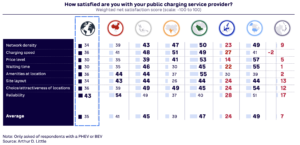A recent report by Cenex, sheds light on key strategies to establish a profitable electric vehicle (EV) charging infrastructure. The study, conducted in collaboration with the International ZEV Alliance (IZEVA), evaluates international approaches and policies that foster private sector involvement in public charging infrastructure deployment.
The report focused on four diverse markets – Canada, China, India, and the Netherlands – to assess charging infrastructure expenditure, revenue, and market sensitivity. Through comprehensive market research and case studies, the report outlines factors impacting the profitability of public charging infrastructure deployment and identifies necessary mitigation measures for government intervention.
One of the notable findings of the report is the emergence of a positive business case for public charging infrastructure deployment in markets with higher EV maturity, such as the Netherlands, China, and Canada. However, the report suggests that establishing a profitable business case is still feasible for India, especially with assistance from public funding and a supportive regulatory environment.
To better understand the factors affecting charging profitability, the report introduces the Charging Infrastructure Business Case Assessment Tool (CIBCAT). This tool generated eighteen scenarios to demonstrate how business cases develop in different markets under various conditions. Factors such as capital costs, electricity prices, and utilisation rates were analysed to assess their impact on charging profitability.
Furthermore, the report highlights the importance of incorporating onsite photovoltaic (PV) systems in charging infrastructure projects, particularly in markets like China and India, where low equipment and installation costs of PV can significantly improve project profitability. However, the report notes that the feasibility of PV integration varies across markets due to factors such as climate and sunlight exposure.
Despite the potential benefits of PV integration, the report cautions against its use in markets like Canada, where high installation costs and limited solar irradiance diminish its economic viability. Additionally, the report emphasises the significance of high charger utilisation rates in enhancing the business case for charging infrastructure projects.
In conclusion, the report provides valuable insights into strategies for establishing profitable EV charging infrastructure. By understanding market dynamics and implementing supportive policies, governments can encourage private sector investment and accelerate the transition to electric mobility, ultimately contributing to global sustainability goals.
Source: Understanding the business case for electric vehicle charging infrastructure | Cenex




